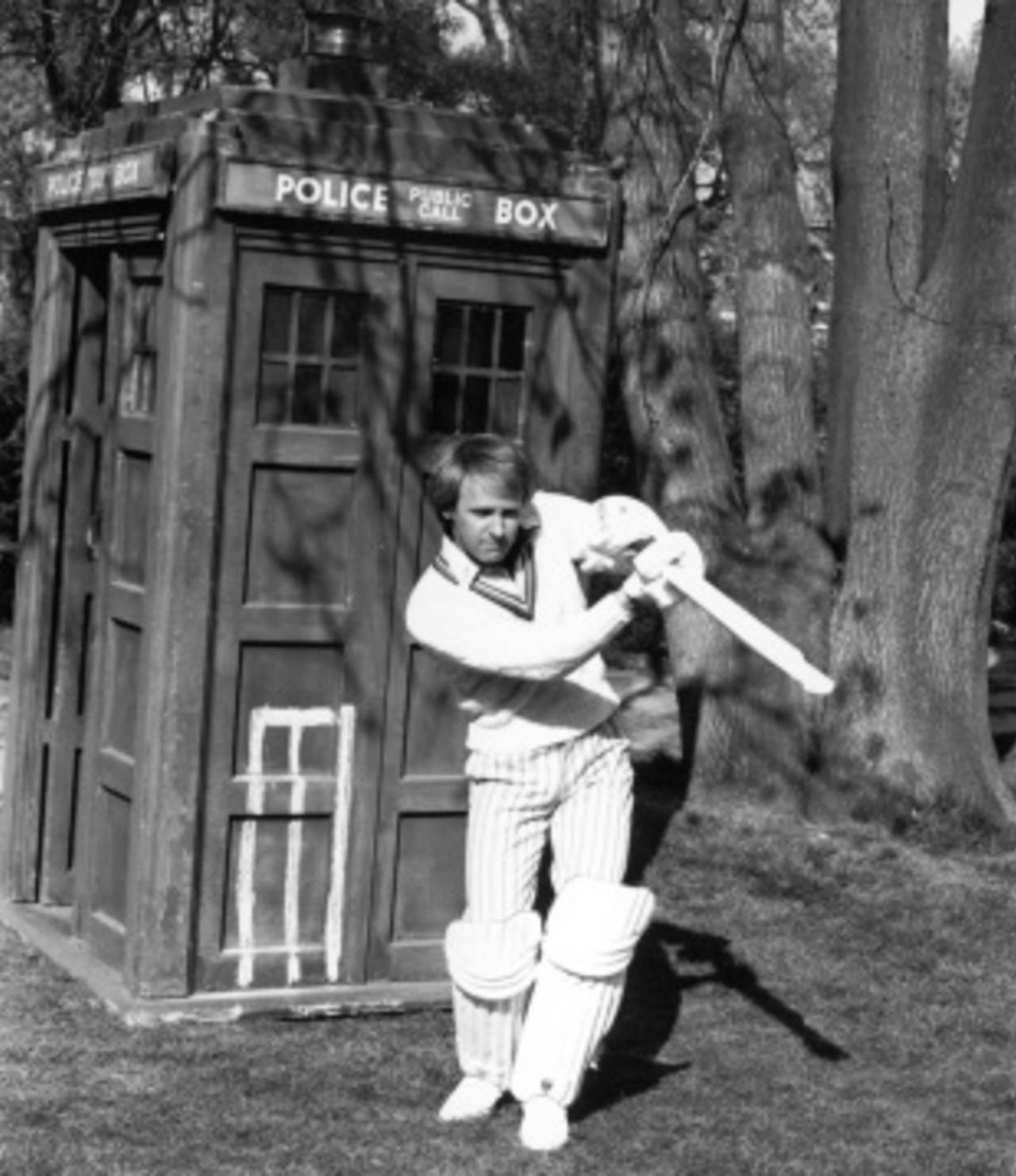A strong side on paper
Characters from books, comics and television who played cricket

Dr Who (Peter Davison) practises his driving outside the Tardis • Getty Images
The central character in Joseph O'Neill's acclaimed 2008 novel Netherland is Hans van den Broek, a Dutchman whose attempts to make a normal life for himself in New York after the 9/11 attacks include playing cricket for the Staten Island club (which does exist: Don Bradman played there on a tour in the 1930s). In a telling line in the book, one character remarks: "There's a limit to what Americans understand. The limit is cricket."
AJ Raffles, the gentleman thief, was the best-known invention of EW Hornung, who was Arthur Conan Doyle's brother-in-law (this might explain why Doyle himself largely steered clear of cricket). Raffles is a talented spin bowler, who plays a lot of country-house cricket, thereby opening up many opportunities for burglary.
Perhaps the ultimate comic-book hero, William Wilson the Wonder Athlete featured in The Wizard for many years from 1943. Wilson, who was apparently born in 1795 but achieved long life by slowing his heart rate down, is first seen emerging from the crowd to run the first three-minute mile. In a later series of stories he captains England to Ashes success in Australia, not long after becoming the first man to climb Everest.
A more recent addition to cricket's fictional heroes is Pradeep Mathew, a mystery spinner who sets a world record in his first Test match - only to have it struck from the record books as a non-event. Mathew features in the Sri Lankan writer Shehan Karunatilaka's first novel, Chinaman, which came out last year. It is narrated by one WG Karunasena, who is convinced that "unlike life, sport matters", and has a son called Garfield (named after Sobers).
PG Wodehouse was a keen club cricketer who played occasionally at Lord's, and his humorous fiction is peppered with cricket references: Jeeves, his most famous creation, is named after a Warwickshire player, while Catsmeat Potter-Pirbright, one of Bertie Wooster's dissolute chums, is said to play "a spot of county cricket". But Wodehouse's main cricketing invention is Mike Jackson, who features in all the Psmith novels, initially as a fine batsman, starting with a match-saving innings against MCC. Murray Hedgcock edited a book called Wodehouse at the Wicket, including more of Wodehouse's cricket dalliances, which was published in 1997.
Even though he was a first-class cricketer himself - his one wicket as a bowler was that of WG Grace - Sir Arthur Conan Doyle only wrote occasionally about the game. His most famous cricketing story was "Spedegue's Dropper", about an asthmatic schoolteacher who practised his underarm bowling by lobbing a ball underarm over a rope hitched to two tall trees. He was summoned from village cricket to an Ashes decider and - you've guessed it - won the match. Thomas Spedegue was carried shoulder-high from the field, but was told to retire immediately by his doctors.
The wonders of Photoshop allowed the fictional Australian cricketer Warwick Todd to be inserted into numerous photos in a series of bestselling spoof diaries a few years ago. Todd, complete with obligatory droopy moustache and an insatiable taste for ice-cold beer, is the creation of the Aussie comedy actor Tom Gleisner. The third book, Warwick Todd Goes the Tonk, is proudly advertised as being "without a foreword by Richie Benaud".
The fictional bully of Tom Brown's Schooldays enjoyed a lengthy comeback in the detailed historical novels of George McDonald Fraser. In these gripping yarns Harry Flashman remains a coward and a cad - but also, especially in Flashman's Lady (1977), exhibits an aptitude for cricket: he takes a hat-trick at Lord's for a team of Rugby old boys, and gets drawn into dealings with a shady bookmaker.

A fictional cricketer with a lap-dancer wife and a psychotic dog, Dave Podmore (Leicestershire and England) was the invention of Christopher Douglas, Andrew Nickolds and Nick Newman, and his hilarious adventures first appeared in the Guardian newspaper, before being turned into books and a radio series. Pod's highest Test score was 4 (an edge through the slips against Sri Lanka), while probably his proudest moment was being appointed as Australia's sledging coach before an Ashes series.
Television's most famous time traveller sported - in his fifth incarnation - a cricket sweater. Peter Davison, who played the Doctor at the time, claimed this was his idea, after the producers asked for an item of clothing that suggested action and eccentricity. In one episode the Doctor spoils a cricket match by coming on to bowl with great success, and in another the cricket ball he permanently carried in his voluminous coat pockets saves his life: in a zero-gravity situation he throws it against a spaceship and catches the rebound, and the impetus takes him safely back to the Tardis (don't try this at home).
Arthur Conan Doyle's famously ascetic detective had little time for team sports such as cricket - but many people claim that his name derives from a combination of two Nottinghamshire players, Mordecai Sherwin and Frank Shacklock ("c Sherwin b Shacklock" was a fairly regular scorecard entry in the late 19th century). And Holmes' even cleverer brother is generally held to be named after another cricketer, the Derbyshire fast bowler William Mycroft.
Steven Lynch is the editor of the Wisden Guide to International Cricket 2012